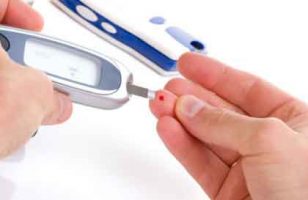- Home
- Editorial
- News
- Practice Guidelines
- Anesthesiology Guidelines
- Cancer Guidelines
- Cardiac Sciences Guidelines
- Critical Care Guidelines
- Dentistry Guidelines
- Dermatology Guidelines
- Diabetes and Endo Guidelines
- Diagnostics Guidelines
- ENT Guidelines
- Featured Practice Guidelines
- Gastroenterology Guidelines
- Geriatrics Guidelines
- Medicine Guidelines
- Nephrology Guidelines
- Neurosciences Guidelines
- Obs and Gynae Guidelines
- Ophthalmology Guidelines
- Orthopaedics Guidelines
- Paediatrics Guidelines
- Psychiatry Guidelines
- Pulmonology Guidelines
- Radiology Guidelines
- Surgery Guidelines
- Urology Guidelines
Reversion from prediabetes to normal blood sugar reduces death and CVD risk by half

Only reversion from 2hPG-defined prediabetes to normal blood sugar was associated with a reduction in future risk of CVD and death.
Reversion to normal blood sugar levels (normoglycaemia) from prediabetes defined by 2 h plasma glucose (2hPG) is associated with a 50% reduction in the risk of cardiovascular disease (CVD) and death, according to a recent study in the journal Diabetologia. The same association was however not seen on the reversal to normoglycaemia from prediabetes defined by fasting plasma glucose (FPG) or by HbA1c.
Prediabetes is an asymptomatic condition that precedes type 2 diabetes. It is characterized by hyperglycaemia i.e high blood sugar, which is lower than the level needed for clinical diagnosis of diabetes but is higher than normal levels.
Doctors sometimes refer to prediabetes as impaired FPG or impaired 2hPG depending on what test was used when it was detected. this condition increases the risk of type 2 diabetes and CVD.
Results indicating prediabetes are:
- [FPG] 5.6-6.9 mmol/l,
- 2 h plasma glucose [2hPG] 7.8-11.0 mmol/l, and
- HbA1c 39-47 mmol/mol [5.7-6.4%]
Reversion from prediabetes to normoglycaemia is known to improve cardiovascular risk factors, but whether it also reduces CVD risk or death is still unclear. To fill this knowledge gap, Dorte Vistisen, Department of Clinical Epidemiology, Steno Diabetes Center Copenhagen, Gentofte, Denmark, and colleagues explored the probability of reversion from prediabetes to normal blood sugar levels from different definitions of prediabetes and associated risk of CVD and death in a longitudinal follow-up of the well-described Whitehall II observational cohort study.
Three glycaemic criteria for prediabetes were assessed for 5193 participants free of known diabetes at enrollment. The probability of a reversion to normoglycaemia among participants with prediabetes in the first examination was calculated according to each glycaemic criterion. The researchers estimated and compared the incidence rates of a composite endpoint of a CVD event or death in participants with prediabetes who did vs did not revert to normoglycaemia. Analyses were adjusted for age, sex, ethnicity and previous CVD.
Also Read: Prediabetes remains stable or reverts to normal blood sugar in most older adults
Key findings of the study include:
- Based on the FPG criterion, 820 participants had prediabetes and 365 (45%) of them had reverted to normoglycaemia in 5 years. The corresponding numbers were 324 and 120 (37%) for the 2hPG criterion and 1709 and 297 (17%) for the HbA1c criterion.
- During a median follow-up of 6.7 (interquartile range 6.3-7.2) years, 668 events of non-fatal CVD or death occurred among the 5193 participants.
- Reverting from 2hPG-defined prediabetes to normoglycaemia vs remaining prediabetic or progressing to diabetes was associated with a halving in event rate (12.7 vs 29.1 per 1000 person-years).
- No association with event rate was observed for reverting from FPG-defined (18.6 vs 18.2 per 1000 person-years) or HbA1c-defined prediabetes to normoglycaemia (24.5 vs 22.9 per 1000 person-years).
- Most people with HbA1c-defined prediabetes remained prediabetic or progressed to diabetes during 5 years of follow-up.
Also Read: This green aquatic plant may lower blood sugar in Prediabetes
The current findings highlight the reduced risk for CVD and death associated with reversion from 2hPG-defined prediabetes, specifically, to normoglycaemia. These findings have important implications for additional cardiovascular risk stratification and intervention in a landscape that has become increasingly controversial.
For detailed study follow the link: https://doi.org/10.1007/s00125-019-4895-0

Disclaimer: This site is primarily intended for healthcare professionals. Any content/information on this website does not replace the advice of medical and/or health professionals and should not be construed as medical/diagnostic advice/endorsement or prescription. Use of this site is subject to our terms of use, privacy policy, advertisement policy. © 2020 Minerva Medical Treatment Pvt Ltd